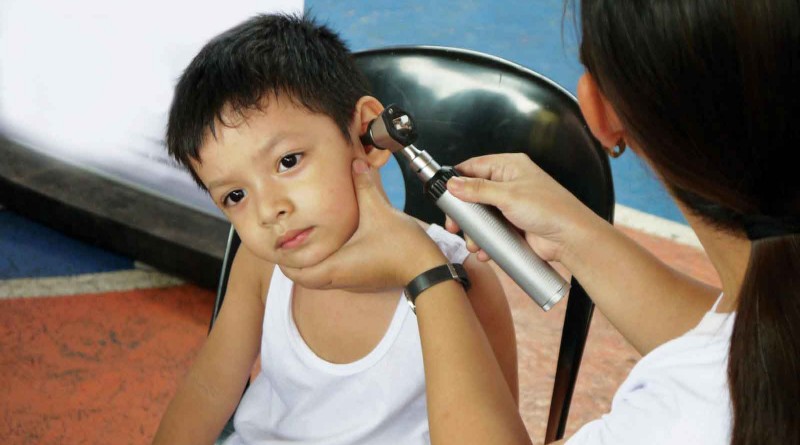Hearing for All
Scientists of the country’s premier Defence Research Development Organisation have come up with affordable variants of costly cochlear implant
By Dr A K Agarwal
The two-year-old son of Amit Tyagi,a resident of East Delhi, who consulted me, has severe hearing loss and for his treatment Cochlear implantation is the only option. But its high cost has left Tyagi worried and he is really anxious about his child’s future.
However, providing a ray of hope to millions of deaf people seeking economical solution to costly cochlear implant the scientists of the country’s premier Defence Research Development Organisation (DRDO) have successfully developed a low-cost cochlear implant costing under Rs 50,000-1, 00,000 price bracket.
While in the West, the implantation costs are borne by insurance, in the absence of such an arrangement in India, it would be crucial to develop a cost-effective model on mission mode. The government is also considering waiving of levies on import of the device.
Cochlear implant, a lasting solution
Cochlear implant is an established, effective and long-term hearing solution for the people with moderate to profound hearing loss. Cochlear Limited pioneered cochlear implant technology and is today a world leader in implantable hearing solutions.
Unlike traditional hearing aids that amplify, or make sounds louder, a cochlear implant system can be a more effective hearing solution for certain people. A cochlear implant is capable of directly stimulating the cochlea hearing nerve, bypassing the damaged area of the hearing pathway.
Today, deaf people with cochlear implants are largely accepted in the deaf community. Bilateral cochlear implants are standard for young children.
Cochlear implants are not hearing aids. Hearing aids amplify sound. Cochlear implants are classified as medical devices by the U.S. Food and Drug Administration (FDA). Cochlear implants function differently from hearing aids. A cochlear implant uses electrical signals to stimulate the auditory nerve. This allows sound to skip around damaged hair cells in the cochlea and go directly to the brain.
The user has a speech processor that collects sound and converts it into electrical signals. The processor then sends those signals to the coil on the user’s head (held in place by a magnet under the skin). The coil in turn transmits the electrical signals to the cochlear implant electrodes inside the cochlea. The electrodes stimulate the auditory nerve, and the auditory nerve sends the signals to be interpreted into soundto the person’s brain.
Not everyone qualifies for a cochlear implant. A candidate can be rejected if he has too much residual hearing for an implant. This is because a cochlear implant destroys whatever natural hearing remains in the implanted ear. When the cochlear implant is not in use, the person cannot hear. This is not much different from what patient has experienced wearing a hearing aid.
Still, the decision to implant a child or to get one yourself is very personal. I faced this same issue myself. There are risks (including risks associated with any surgery), however minimal. These risks include facial nerve injury and infection in the surgical area. Furthermore, if a patient does not strive to develop good auditory skills, the implant may not produce good results.
It’s preventable!
Hearing loss can be categorised as mild, moderate, severe, or profound and the half of hearing loss is preventable by immunisation, proper care around pregnancy, avoiding loud noise, and avoiding certain medications. The World Health Organization (WHO) recommends that young people limit the use of personal audio players to an hour a day in an effort to limit exposure to noise.
Early identification and support are particularly important in children. For many hearing aids, sign language, cochlear implants and subtitles are useful.
As per 2013 data, hearing loss affects about 1.1 billion people to some degree. It causes disability in 5% (360 to 538 million) and moderate to severe disability in 124 million people. Of those with moderate to severe disability 108 million live in low and middle income countries. Of those with hearing loss, it began in 65 million during childhood.
Those who use sign language and are members of deaf culture see themselves as having a difference rather than an illness. Most members of Deaf culture oppose attempts to cure deafness and some within this community view cochlear implants with concern as they have the potential to eliminate their culture. The term hearing impairment is often viewed negatively as it emphasises what people cannot do.
Hearing loss, also known as hearing impairment, is a partial or total inability to hear and a deaf person has little to no hearing. Hearing loss may occur in one or both ears and in children hearing problems can affect the ability to learn language, while in adults it can cause work related difficulties. In some people, particularly older people, hearing loss can also result in loneliness.
Whether temporary or permanent, hearing loss may be caused by a number of factors, including genetics, ageing, exposure to noise, some infections, birth complications, trauma to the ear, and certain medications, or toxins.
Chronic ear infections is also a common condition that results in hearing loss.Certain infections during pregnancy such as rubella may also cause this problem. Hearing loss is diagnosed when hearing testing finds that a person is unable to hear 25 decibels in at least one ear and so testing for poor hearing is recommended for all newborns.
(The author is renowned ENT Surgeon/Professor of Excellence and Ex-President, Delhi Medical Council, New Delhi)


